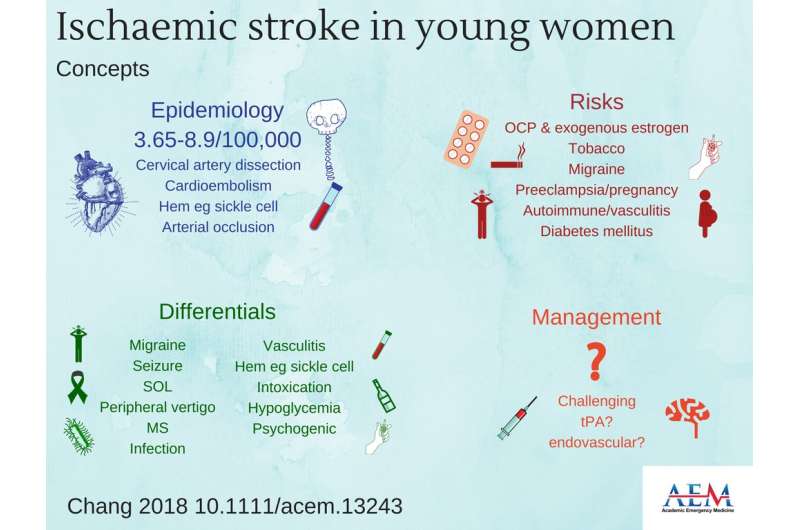Multidisciplinary approach to identifying and caring for ischemic stroke in young women

A multidisciplinary approach aimed at providing emergency physicians with a foundation of knowledge regarding ischemic stroke in young women and addressing the unique challenges in the evaluation and diagnosis of ischemic stroke in young women may improve outcomes for patients served in the ED. That is the primary finding of a study to be published in the January 2018 issue of Academic Emergency Medicine (AEM), a journal of the Society for Academic Emergency Medicine (SAEM).
The lead author of the study is Bernard P. Chang, MD, PhD, assistant professor of medicine in the Department of Emergency Medicine, at Columbia University Medical Center, New York. Dr. Chang's research interests are in psychological and cardiovascular outcomes following acute medical events such as stroke and acute coronary syndrome.
The study, by Chang, et al, suggests that multiple opportunities exist for future research aimed at improving detection and treatment of young women with ischemic stroke. The authors propose that work aimed at creating and applying clinical decision rules, educational campaigns designed to educate young women and emergency medicine providers, and consideration of preventive strategies that might be applied in the emergency department may ultimately lead to interventions that can improve outcomes in young women with ischemic stroke.
The findings support the need to increase transparency and align incentives so that efficient, cost-effective, high-quality, definitive patient-centered care can be provided for all patients.
Andrew W. Asimos, MD, a professor in the Department of Emergency Medicine, Carolinas Medical Center and the Medical Director of the Carolinas Stroke Network, Carolinas HealthCare System commented:
"As with other thromboembolic disease processes, this review stresses the importance of recognizing non-atherosclerotic risk factors in premenopausal women that may predispose them to stroke. While future research in predictive modeling may lead to a decision rule that formally includes some or all of these risk factors, exploring for their existence in young women may help prompt diagnostic consideration for stroke, even with subtler clinical presentations. As machine learning and other artificial intelligence becomes increasingly integrated with the electronic medical record, I envision a future in which clinicians may be prompted to consider stroke in young woman, based on the presence of these risk factors."
More information: Bernard P. Chang et al, Neurology Concepts: Young Women and Ischemic Stroke-Evaluation and Management in the Emergency Department, Academic Emergency Medicine (2017). DOI: 10.1111/acem.13243


















